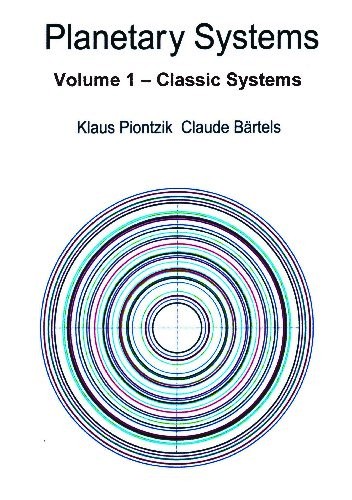| Copyright © Klaus Piontzik | ||
| German Version |
| In order to be able to clearly create an e-function, 3 data points are required. But Mars only has 2 moons. Since both moons orbit Mars relatively close, the surface of Mars can be used as a third value. The entire situation is given in the following table. |
| Name | Radius | Nr | ln(Radius) | Nr |
| calculated | ||||
Mars equator |
3396 |
0 |
8,13035355 |
0 |
Phobos |
9376 |
1 |
9,14590851 |
1,05 |
Deimos |
23459 |
2 |
10,0630095 |
2 |
| When logarithmized and transferred to a diagram, a surprising simplification results. The logarithmic values ??are already so linear that further linearization is no longer necessary. |

Abbildung 8.3.6 – Linearization
|
As before, the e-function can be determined from this.
The equation for the approximation line is:
y = ln R = 0.9963·x + 10,407 The following applies to the orbits of the moon: R = 33096·e0.9663·x [Km] |

Illustration 8.3.7 – Moons of Mars
<

|
200 sides, 23 of them in color 154 pictures 38 tables Production und Publishing: ISBN 978-3-7357-3854-7 Price: 25 Euro |